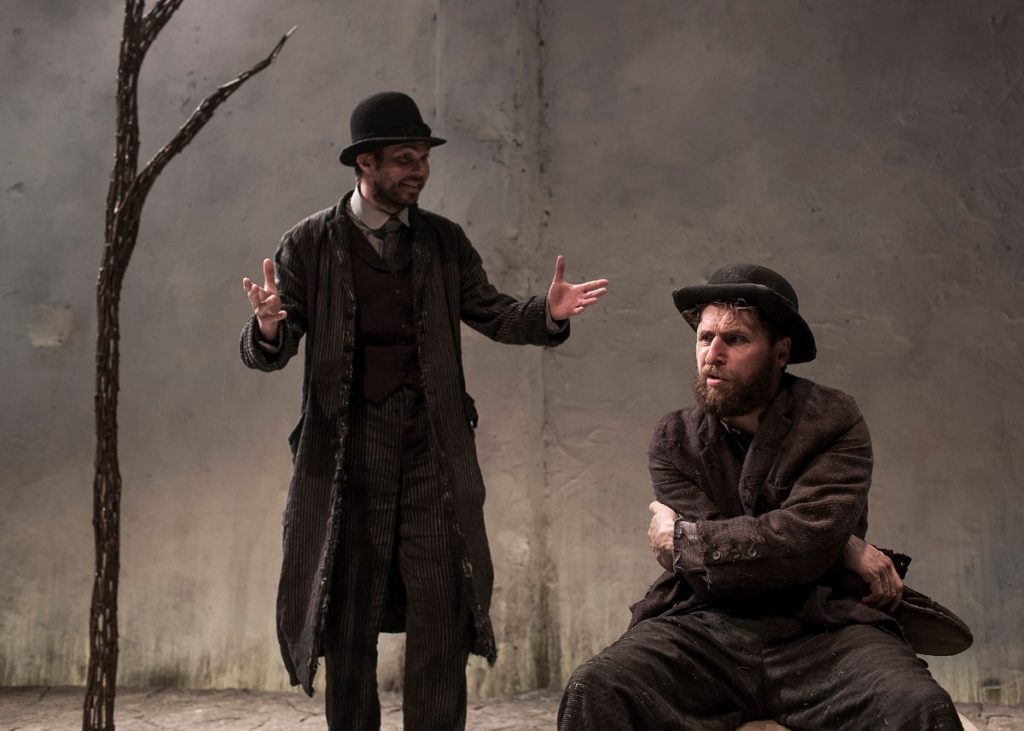

The rigorous use of the unities is demanded by the implacable interpretation of human life. The despair in the play, which is never defined as such but which pervades all the lack of action and gives the play its metaphysical color, is the fact that the two tramps cannot not wait for Godot, and the corollary fact that he cannot come. Nothing is completed because nothing can be completed.

The action, in the same way, describes a circle. The act of waiting is never over, and yet it mysteriously starts up again each day. Tame is really immobility, although a few minor changes do take place during the play: the tree grows leaves and one of the characters, Pozzo, becomes blind. Time is equivalent to what is announced in the title: the act of waiting. The unity of time is two days, but it might be any sequence of days in anyone’s life. He will not come out of one place into another. Godot is not in any place comparable to the setting of the play. As the play unfolds we come to realize that M. It is perhaps best characterized as being the place where Godot is not. The unity of place is a muddy plateau with one tree, a kind of gallows which invites the tramps to consider hanging themselves. Its close adherence to the three unities is a clue to the play’s dramaturgy. The utter simplicity of the play, in the histrionic sense, places it in the classical tradition of French playwriting. It has its own beauty and suggestiveness, and it makes its own comment on man’s absurd hope and on the absurd insignificance of man. But the play is far from being a pastiche. The long speech of Lucky, a bravura passage that is seemingly meaningless, is strongly reminiscent of Joyce and certain effects in Finnegans Wake. The language of the play has gravity, intensity, and conciseness. The purely comic aspect of the play involves traditional routines that come from the entire history of farce, from the Romans and the Italians, and the red-nosed clown of the modern circus. Pozzo and Lucky, the master and slave, are half vaudeville characters and half marionettes. The two tramps of Beckett, in their total disposition and in their antics with hats and tight shoes, are reminiscent of Chaplin and the American burlesque comedy team. He does not come and the two tramps resume their vigil by the tree, which between the first and second day has sprouted a few leaves, the only symbol of a possible order in a thoroughly alienated world. The play is a development of the title, Waiting for Godot. Godot will not come today, but that he will come tomorrow. Two other characters appear, a master and a slave, who perform a grotesque scene in the middle of the play. They quarrel, make up, contemplate suicide, try to sleep, eat a carrot and gnaw on some chicken bones. Two tramps are waiting by a sickly looking tree for the arrival of M. THE plot of Samuel Beckett’s Waiting for Godot is simple to relate.


 0 kommentar(er)
0 kommentar(er)
